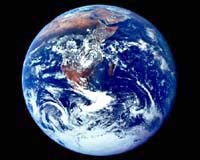
 |
The gasoline-doused fins were set alight on the orders of Palau President Tommy Remengesau to demonstrate that the tiny republic was serious in its crackdown on shark fishing and mutilation, the director of public safety, Hazime Telei, said.
Remengesau, who received international attention when he first set fire to confiscated shark fins last May, said the republic could have sold the fins for a substantial profit but that it was "not in the business of selling sharks, nor do we want to be".
Comprehensive marine protection laws passed in September banned the practice of lopping off the highly-valued shark fins and took the additional step of outlawing shark fishing all together.
In the first enforcement of the new law, authorities set fire to 455 kilos (1,000 pounds) of shark fins and more than a tonne of shark carcasses seized recently from a Taiwanese long-liner, Ching Chung Fa.
Fishermen around the world have increasingly targeted sharks for markets in Southeast Asia, where shark fin soup is widely popular.
Marine biologists denounce shark finning because it wastes nearly the entire catch. But they also oppose fishing heavily for sharks because they are apex predators with slow reproductive cycles. That means there are fewer numbers of sharks and they bounce back slowly, if at all, from heavy fishing, biologists say.
A Customs officer discovered the shark cargo on the Ching Chung Fa as it was being cleared to leave the republic, authorities said. Neither shark carcasses, nor shark fins were listed on the manifest.
Palau agreed to release the vessel on payment of a 10,000 dollar fine, in part because it was the first violation of the new law which carries a maximum fine of 500,000 dollars.
But a statement from the attorney general's office said the lighter penalty was not an indication of leniency in future.
"The Office of the Attorney General intends to prosecute to the fullest extent of the law future violations of the prohibition against shark-finning," the statement said.
Palau, with a population of 20,000, is an island chain about 800 kilometres east of the Philippines.
TERRA.WIRE |